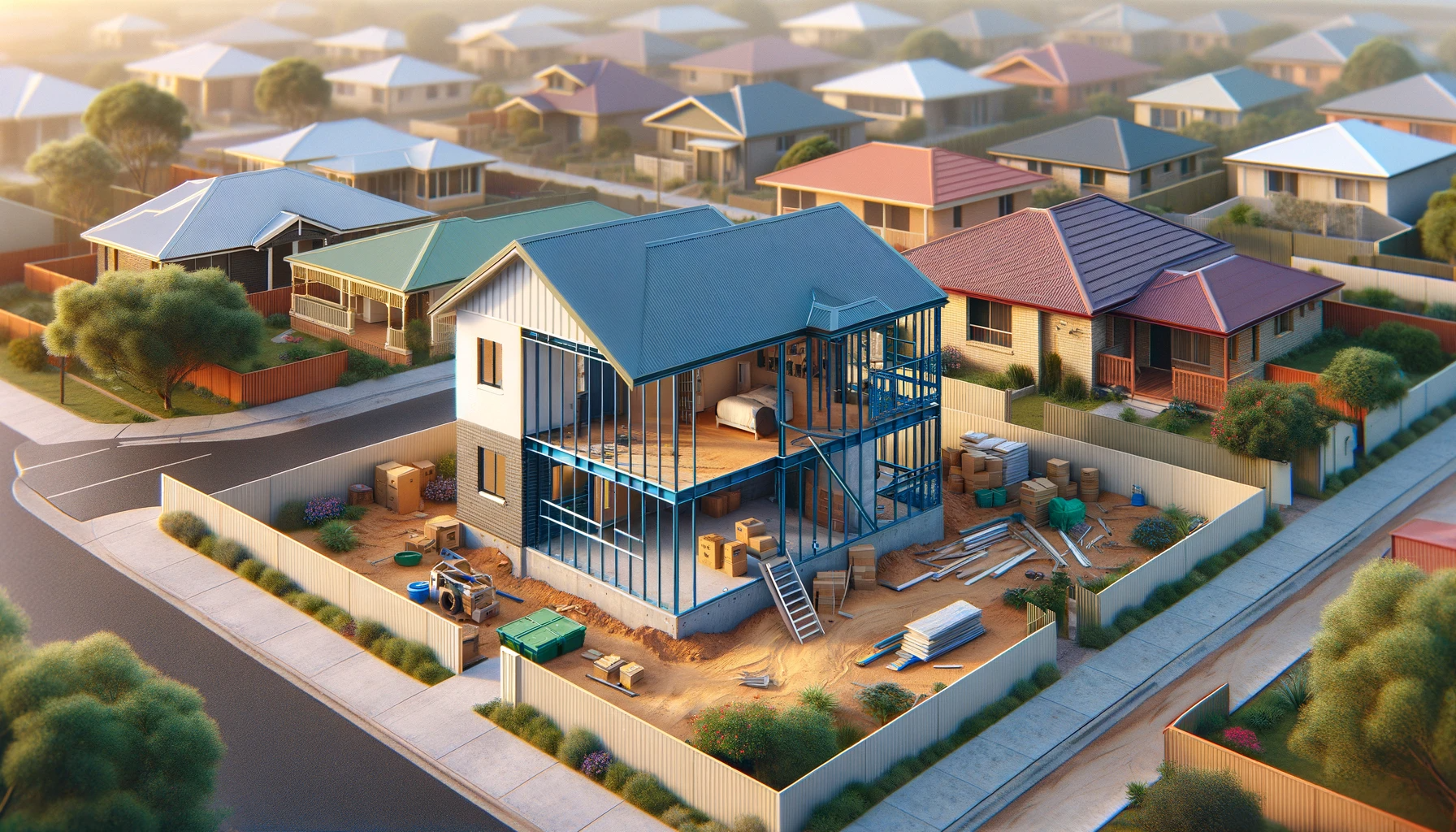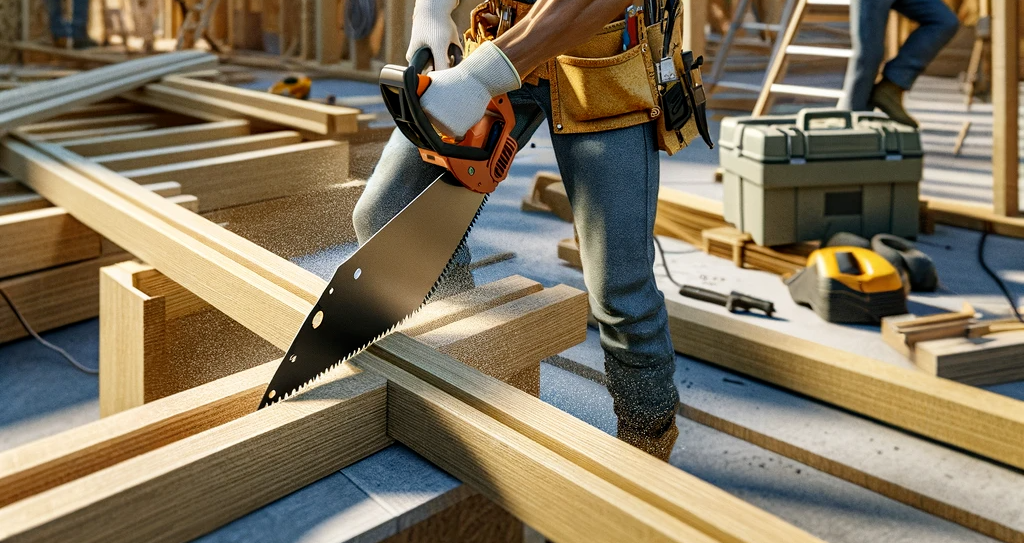Introduction
Construction techniques are continuously evolving to address sustainability, longevity, and cost-effectiveness. And amidst this evolution, steel framed housing has grown traction as a reliable alternative to conventional timber frame homes, especially in Australia where climatic challenges like termites and humidity are significant.
If you're looking to get the ball rolling on a home construction, having a solid understanding of the pros and cons of steel frame housing is a necessity to making informed decisions for your own home. As far as laying strong foundations go, making intentional choices about your home's skeleton is pretty important.
This article provides a comprehensive analysis of steel frame homes, so you can get an understanding of their benefits and drawbacks in comparison to timber frames. To conclude, we'll give you an overview of some quality homebuilders who specialise in steel construction, if you decide it's the route to go down.
Many homebuilders these days offer steel framing - typically Truecore Steel - so whether you're in the market for a kit home, a knockdown rebuild, custom home or flexible floor plan there are suppliers available.
The Purpose of Framing, at its Core
Any home's structure should serve to provide considerable inner strength. Here's a breakdown of the general importance of a home's framing:
-
Structural Support: The primary purpose of home framing is to provide a stable and sturdy structure for the house. It supports the weight of the roof, walls, and floors, ensuring the building's overall stability and integrity. Framing defines the shape and strength of the house, bearing the load of both the internal and external components.
-
Defining Spaces: Framing creates the layout of the house, bringing a blueprint to life by dividing the internal space into rooms, hallways, and other areas..
-
Base for Interior and Exterior Finishing: The frame serves as the attachment point for interior elements like drywall, insulation, and electrical wiring, as well as for external features such as siding, windows, and doors.
-
Insulation and Energy Efficiency: A well-constructed frame allows for effective insulation, which is essential for maintaining energy efficiency. Proper framing can minimise gaps and thermal bridges, reducing heat loss in winter and heat gain in summer, thereby optimising energy use and comfort.
-
Durability and Longevity: The quality and design of the framing determine the longevity and durability of the house. A robust frame can withstand external forces like wind, seismic activity, and water leakage.
No matter the specific project, a well-constructed building frame is integral to securing enduring functionality.
Understanding Steel Frames
Unlike timber frames that dominate residential construction, steel is fire resistant, borer proof, and rot-proof. Offering this structurally sound and durable skeleton for homes, gives homeowners the peace of mind knowing their dream home will last.
Its adoption signals a shift towards materials that are not only robust but also adaptable to various environmental challenges. Steel framed houses have become a popular choice among builders like JG King and Rawson Homes, who use Truecore Steel.

Advantages of Steel Frames
-
Speed of Construction: Steel frames are pre-engineered to exact specifications, ensuring precision and ready-to-go convenience. They're lightweight - in fact, about 50% lighter than timber - reducing the need for extensive labour and resources. This attribute, coupled with their compatibility with insulation and plasterboard, expedites the building process.
-
Resistance to Elements: Steel's resilience in extreme weather conditions is noteworthy. In flood situations, unlike timber, steel does not absorb moisture, thus avoiding rot and mould issues. Its ability to withstand high winds and extreme conditions makes it a reliable choice for Australian homes in volatile climates.
-
Fire Resistance: It won't catch fire. Steel is non-combustible, which offers enhanced safety to those in bushfire prone areas. While extreme heat can affect steel's strength, its melting point is 1350 degrees Celsius. With the highest recorded bushfire temperature at 1150 degrees Celsius, a steel frame core it remains a safer option compared to timber, which is inherently flammable.
-
Pest and Termite Resistance: In Australia, where termites pose a significant threat to homes, steel frames offer a foolproof solution. Their immunity to termites and other pests like borers and rodents is a decisive advantage over timber.
-
Low Maintenance and Longevity: Steel frames require minimal upkeep as they resist movements like shrinking or warping, common in timber. This stability reduces long-term maintenance costs.
-
Efficient and Environmentally Friendly: The production of steel frames involves minimal waste. Furthermore, steel's status as the most recycled material globally, capable of being reused infinitely, underscores its environmental credentials.
Drawbacks of Steel Frames
Despite their advantages, steel frames are also not without their challenges:
-
Environmental Impact: The energy-intensive production of steel is a significant environmental concern, contributing to pollution and a large carbon footprint.
-
Corrosion Risks: Particularly in coastal areas, steel frames can be susceptible to corrosion if not properly maintained, or if scratches occur to the galvanised steel.
-
Cost Variability: While the long-term cost-benefit analysis often favours steel, the initial higher costs can be a barrier for some projects. Additionally, specialised labour required for steel construction can further increase expenses.
Comparing Costs
Initially, steel frames can be more expensive than timber due to higher manufacturing and labour costs. However, when considering long-term savings on installation, maintenance, termite-proofing, and even potential insurance premium reductions, steel frames can be more cost-effective. The precision of steel frames also contributes to better energy efficiency through improved sealing of doors and windows.
Timber Frames: A Contrast
Timber frames wouldn't have become a default house frame if they didn't do their job, so it'd be misleading to conclude that they're totally a thing of the past. However, in Australia where climates are becoming increasingly extreme - 2021 and 2022 saw some of our wettest summers - it's best practice to think critically about the sort of inner strength you're giving to your home.
Timber frames, while typically cheaper upfront, have their own set of challenges. The on-site construction process can lead to errors and wastage. Timber's vulnerability to pests, moisture, and fire requires additional protective measures. Although timber is a renewable resource and offers natural insulation properties, these benefits are offset by the need for ongoing maintenance and the risk of structural compromise over time.

Steel Frame Homes in Australia: A Historical Perspective
Steel has a rich history in construction, dating back to before the 20th century, with initial applications in train stations and expanding to churches and other structures. Post-World War II, Australia saw a shortage of building materials leading to a significant shift towards steel framing, evidenced by the use of steel wall frames called Econosteel.
The 1960s marked a boom in steel frame housing, with notable projects like the construction of 50 steel-framed homes by an American builder on the Gold Coast, and the introduction of 1.2mm thick galvanised steel frames in Sydney in 1968.
Kit Homes and Steel Frames
For those interested in steel frame homes, several builders specialise in this area. Imagine Kit Homes, and Kitome are notable examples of prefabricated kit home builders, offering a range of steel frame home options. JG King and Rawson Homes offer knockdown rebuilds and flexible floor plans for those in VIC and NSW respectively.
Conclusion
Steel frame homes present a robust, durable, and environmentally considerate option in the realm of modern construction, particularly in challenging environments like Australia. While the initial cost and environmental impact of production are concerns, the long-term benefits of durability, pest resistance, and low maintenance make steel frames a worthy consideration for homeowners.

Publisher Website: www.homeshelf.com.au